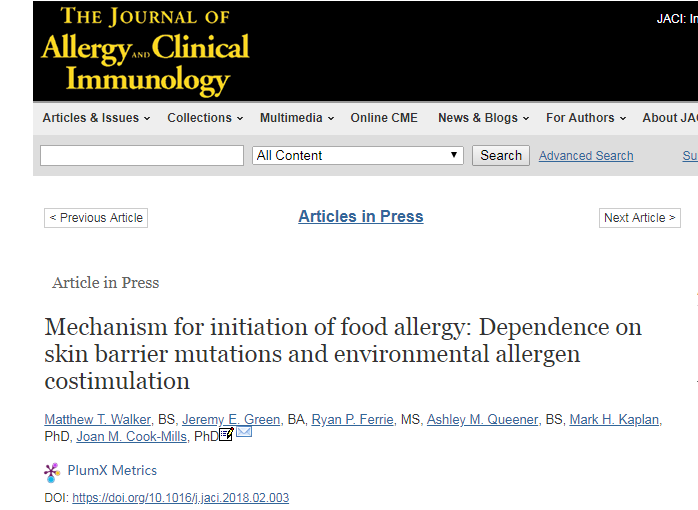Introduction: According to the Centers for Disease Control and Prevention, 4% to 6% of children in the United States are allergic to food. The mechanism of food allergy in infants and children has long been a mystery. A new Northwest Medical Research report found that environmental and genetic factors must coexist to trigger an allergic reaction.

The results of the study were published in the journal "Journal of Allergy and Clinical Immunology" entitled "Mechanism for initiation of food allergy: Dependence on skin barrier mutations and environmental allergen costimulation" on April 6th.
The study's lead author, Joan Cook-Mills, professor of allergy immunology at Northwestern University Feinberg School of Medicine, said that this is the process that triggers food allergies. It is we understand how food allergy begins in the early stages. One of the major advances.
Although the mechanism of development of neonatal food allergy is not known, it is clearly related to the genetic susceptibility of skin barrier defects in the patient population. According to Cook-Mills, the purpose of this study was to determine whether the skin barrier mutations of the major heterozygotes in the patient population contribute to food allergy.

Specifically, the researchers sensitized mice with heterozygous filaggrin (Flg) and Tmem79ma mutations with environmental and food allergens, including food allergens (such as eggs and peanut protein) and allergens in dust (indoor Dust mites, etc.) and sodium dodecyl sulfate (a component of a baby wipes). After sensitization, mice were challenged with oral food allergens and then evaluated for inflammation and allergic reactions in mice.
The results show that allergic reactions occur in mutant mice only after the skin is transiently exposed to food and environmental allergens. Importantly, these newborn mice' responses to food allergens depend on genetic defects in skin barrier function and exposure to environmental allergens.
Cook-Mills said that these new animal studies provide the basis for testing interventions, and future targeted interventions will more effectively prevent infant and child food allergies.
Reference
Food allergy is linked to skin exposure and genetics
Souce: NovoPro 2018-04-11
